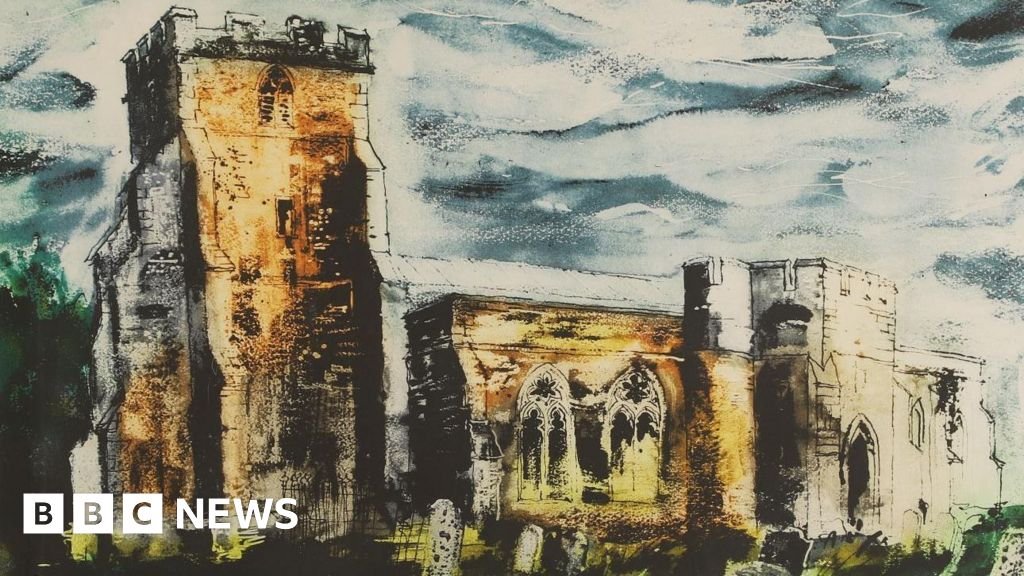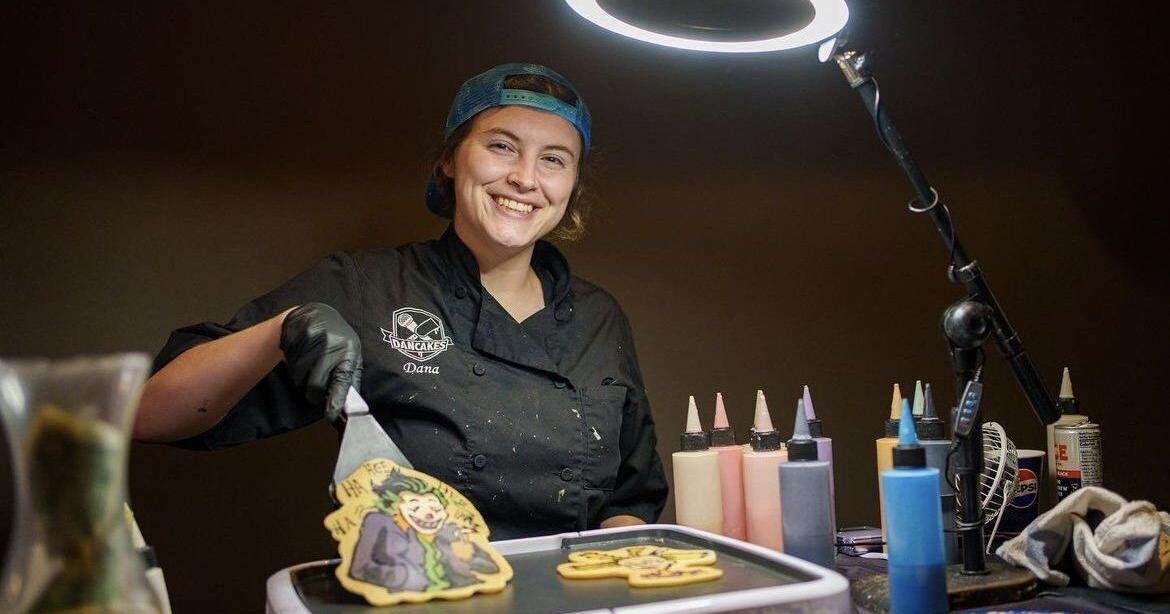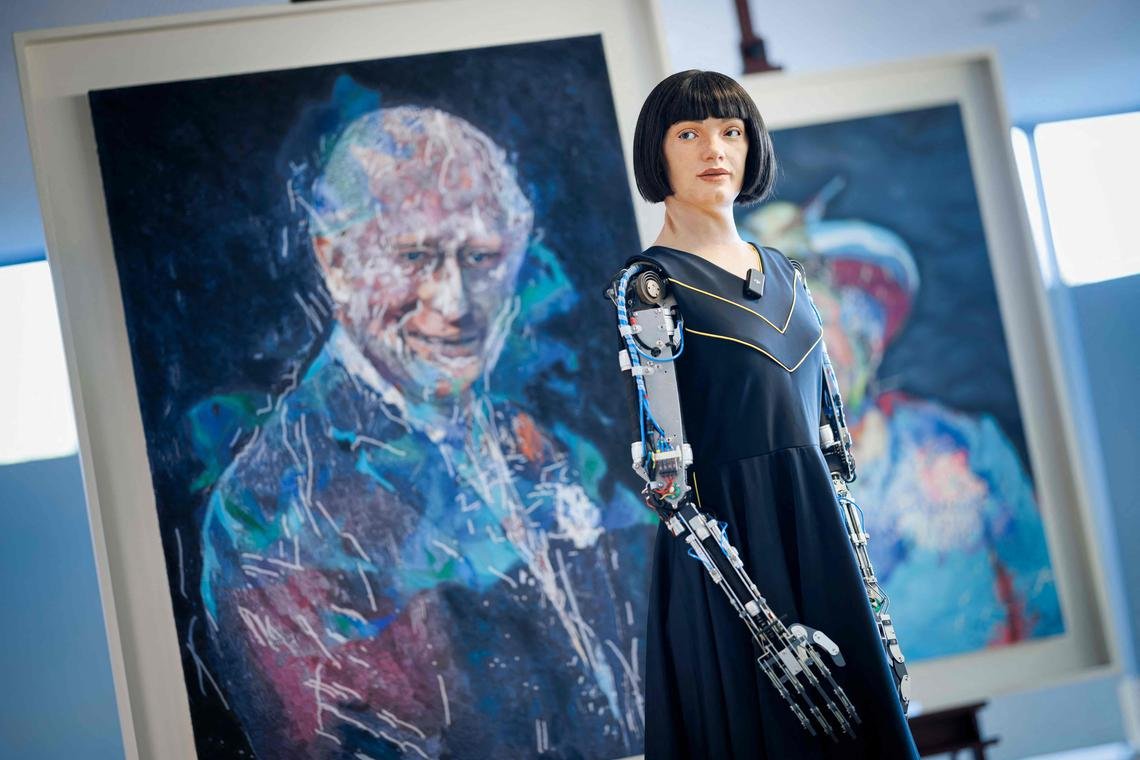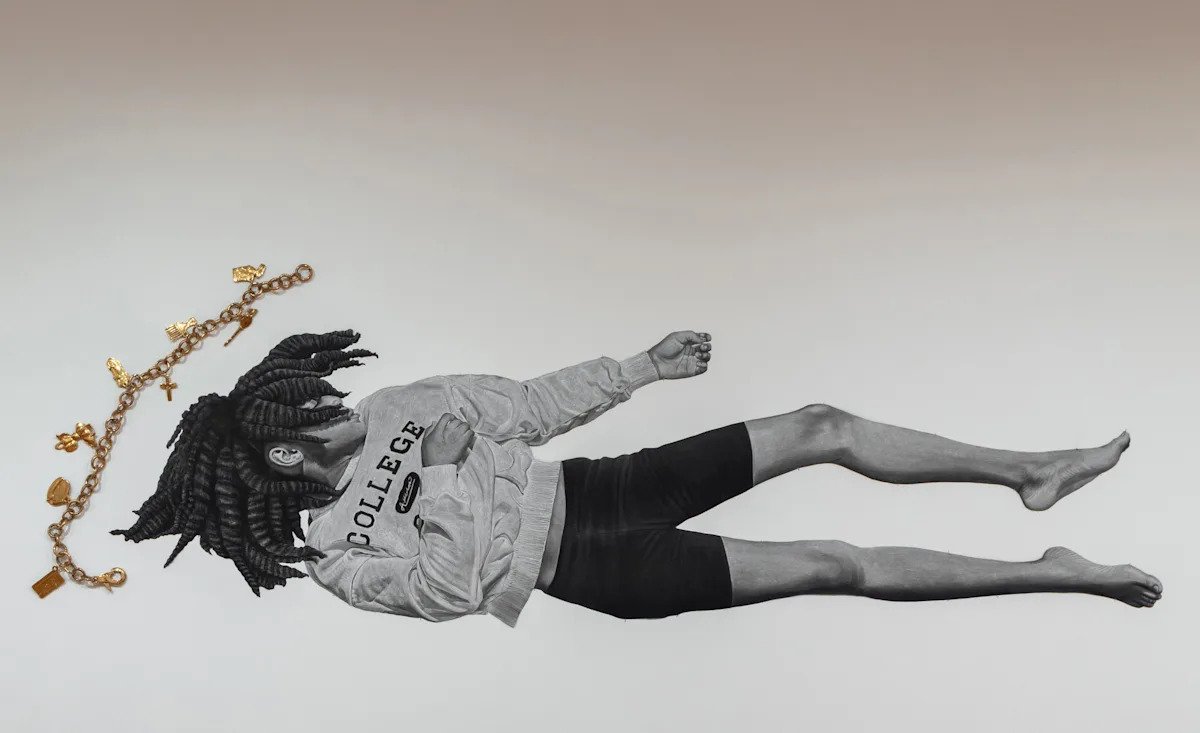SINGAPORE – For two weeks in 1992, 100 eggplants of various girths and ombres jutted out of three slate walls at Parkway Parade. Artist Suzann Victor, who co-founded art space 5th Passage in the mall, was hoping to tickle the fancy of idle office workers with her risque visual gag as the phallic fruit rotted in public.
Three decades later, the ephemeral aubergines in Still Life have found a new lease of life as part of National Gallery Singapore’s (NGS) revamped Singapore art history exhibition. The commission, featuring 222 new brinjals, is one of over 400 artworks and artefacts on show at Singapore Stories: Pathways And Detours In Art, which opens on July 18.
Lead curator Adele Tan, who led this first major revamp of the Singapore gallery, admitted that the inaugural 2015 exhibition Siapa Nama Kamu?: Art In Singapore Since The 19th Century was sombre, if necessarily so, for a fledgling institution. “There was tremendous urgency to tell the story as if we were instructing the art history to our audiences.”
Her maxim for the revamp is, therefore, “let there be lightness”. While the exhibition’s flow remains largely chronological, expect moments of levity and detours into lesser-known figures and episodes in art history as the new show is more free-flowing and almost doubles its exhibition footprint to 35,400 sq ft, comprising the entire second level of the City Hall wing.
But her lightness is also an invitation to ponder seriously.

Artist Suzann Victor’s Still Life (1992/2025) features 222 eggplants nailed to two walls in the walkway between galleries.
ST PHOTO: GIN TAY
In the inaugural exhibition, Victor was represented by a single installation Expense Of Spirit In A Waste Of Shame, mourning the body’s absence in a 1994 work. It was made in the year Singapore banned performance art after an offending performance at 5th Passage led to the group’s eviction. In Singapore Stories, she is represented instead by a more humorous work predating the traumatic wound in the Singapore contemporary art scene.
responded to calls from visitors for more women and minority artists
. About one in four artists in the new show are women. It is not exactly numerical parity, but there are significant clusters of artworks dedicated to the likes of pioneer performance artist Amanda Heng, ceramic artist Suriani Suratman and female ink artists working in a male-dominated genre.
The usual names that dominate Singapore art history still get huge attention – Nanyang artists like Chen Wen Hsi, for example,
whose largest artwork Gibbons (1977) was recently conserved and is now on show
. Performance art rock star Tang Da Wu’s iconic jacket from Don’t Give Money To The Arts (1995) has been replaced with a provocative visual pun, Just In Case (1991), a timely invitation for Singaporeans to consider Myanmar from a distance.

Visitors engaging with contemporary artist Tang Da Wu’s Just In Case (1991), which invites readers to peep into a hole in the box to look at a provocative visual pun.
ST PHOTO: GIN TAY
The curators’ choice to forgo even-handedness and feature clusters of works by select figures allows for a fuller display of an artist’s developing oeuvre.
Dr Tan says: “The companion to ‘overlooking’ is ‘straitjacketing’ – equally compromising is being stereotyped into one thing.”
Nanyang artist Cheong Soo Pieng, for example, is still represented by his trademark paintings of lithe Balinese women – an outcome of the mythologised 1952 Bali trip. But his bolder abstract and mixed-media works such as Imagination (1970) offer a glimpse into his experiments with scrap industrial materials.

Artist Vincent Hoisington’s Civilisation (circa 1970s) uses industrial polyurethane paint and turpentine to create a gunky dystopian scene.
ST PHOTO: GIN TAY
Beyond obvious artist groupings such as the Nanyang artists, the displays highlight other resonances in Singapore artists’ practices. Cheong’s works are placed near Vincent Hoisington’s dystopian Civilisation (circa 1970s), which uses unconventional materials like industrial polyurethane paint and turpentine.
Cheong is also placed near his students Khoo Sui Hoe and Ng Eng Teng, best known for his playful sculptural figures made using ciment fondu, an industrial concrete.
The exhibition also marks NGS’ cautious foray into the broader visual culture, with surprising names such as film legend P. Ramlee and children’s book illustrator Kwan Shan Mei on show.

The National Gallery Singapore ventures into visual culture, including works such as film excerpts by film icon P. Ramlee.
ST PHOTO: JASON QUAH
Dr Seng Yu Jin, project director of Singapore Stories, says the gallery will eventually curate full-scale exhibitions on other aspects of visual culture such as cartoons and comics. As NGS celebrates its 10th year, he says: “We have greater confidence to expand our methodology beyond art history into visual culture.”
Dr Tan also says to expect the museum’s programming to broaden to speakers and participants across art forms such as the literary and performing arts. “The density of referencing that can happen is really exciting – and being able to jump from one medium to the next fluidly is also what drives creatives.”
Singapore Stories comes equipped with a flexible project space, Dalam Singapore, which will be refreshed annually. Its inaugural show, helmed by curator Lim Shujuan, is Tchang Ju Chi: Tireless Camel.
Tchang is a forgotten pre-war pioneer artist who died at 38 in the Sook Ching massacre of 1942. The China-born artist served as the president of the Society of Chinese Artists and was an early proponent of painting local subject matter.
The exhibition features two new commissions in addition to Victor’s. Ming Wong’s Four Malay Stories Redux weaves P. Ramlee’s movie clips with the artist’s 2005 re-enactment of P. Ramlee’s movies.
who is Singapore’s pick for the 2026 Venice Biennale
, will engage in virtual conversations with visitors via hologram in Let’s Chat Further (2025). The generated content will be used to develop an artificial-intelligence persona based on the artist for another work, Retired Singirl (2025 to 2030).

Works by master potter Iskandar Jalil and his student Suriani Suratman are on display in a ceramics island table in the exhibition.
ST PHOTO: GIN TAY
Since opening in 2015, the DBS Singapore Gallery has received more than 200,000 visitors annually on average – with 55 per cent being Singaporeans and permanent residents. Singapore Stories’ curatorial team is rounded off by Teo Hui Min, Joleen Loh, Qinyi Lim, Chee Jin Ming and Kathleen Ditzig.
The new exhibition will see more frequent rehangs after the first year. Dr Tan hopes visitors “should feel like their eyes have opened up and their apertures have expanded”.
Where: DBS Singapore Gallery, National Gallery Singapore, 1 St Andrew’s Road
When: From July 18, 10am to 7pm daily
Admission: Free for Singaporeans and permanent residents
Info:
str.sg/cW7x
With 158 artists on show spanning the 19th century to today, The Straits Times picks five lesser-known art history episodes in Singapore Stories to look out for.

A cluster of works features Malay artists who experimented with batik, including Jaafar Latiff and Yusman Aman.
ST PHOTO: GIN TAY
A cluster of works by Jaafar Latiff begins with one of his earliest experiments on contemporary batik in the cubist and kaleidoscopic Fortune Teller (1967). Its centrepiece is Vision 1/86 (1986), representing Jaafar’s turn to acrylic – which nevertheless still bears the rhythms and energy of the wax-resist dyeing technique.
There are resonances with Abdul Ghani Hamid and S. Mohdir, key figures in the longest-running Malay art collective Angkatan Pelukis Aneka Daya, whose oil and acrylic works borrow from the visual language of batik.
Brilliant colours stand out in this cluster of batik-related works that also include one by Sarkasi Said Tzee and Yusman Aman, represented by a quiet but charming work (Structure I, 1973) stacked with pink and purple rectilinear forms.

A printmaking wall features the works of pioneering printmakers such as Chen Cheng Mei and Chng Seok Tin.
PHOTO: NATIONAL GALLERY SINGAPORE
Had artist Chen Cheng Mei not donated two newly imported printing presses to Lasalle College of the Arts in 1985, Chng Seok Tin might not have been able to head the school’s printmaking department and nurture generations of printmakers.
A printmaking wall in Singapore Stories centres on Chng, who lost most of her vision in 1988 due to an accident. Her Self Portrait (1989), made a year after, is a moving tangle of lines dancing around a dense mass of black. Chng, who received a Cultural Medallion in 2005, died in 2019.
By her side on the wall is Chen’s Durian (1986), reflecting her fascination with the natural world. Chen studied printmaking at the influential Atelier 17 in Paris, and the influence of printmaking on her paintings is evident in another section in the gallery which foregrounds her travels around the world and involvement in the field trips of the Ten Men Group.

When nude life drawing was a taboo in conservative Singapore, Solamalay Namasivayam insisted on its practice. He is represented by the two works on the right.
ST PHOTO: GIN TAY
When nude life drawing was a taboo in conservative Singapore, Solamalay Namasivayam insisted on its practice – establishing Group 90, Singapore’s first institutional life figure drawing collective committed to the study of the nude.
with his bold charcoal lines described as “Michelangelesque”
– are on show beside fellow Group 90 artist Chia Wai Hon, including a colourful and geometric reclining nude.
On the other side of the wall is an interesting counterpoint – women artists Amanda Heng, Susie Wong and Ho Soon Yeen depicting the nude. Ho’s crouching figure in Drawing From This Position With Untucked Tummy (1992) strips the female body of all its romantic notions, a work first shown at an exhibition with the artist Dominique Hui titled We Kissed in the now-defunct art space Substation.
In a review of the exhibition published in The Straits Times, critic Ng Sek Chow wrote: “On one level, We Kissed might seem crude and amateurish. But it is crucial for Singapore, a city aspiring to be a major art centre, to have an alternative space where unconventional views, visual and otherwise, can be aired and discussed.”

Nudes by women artists such as Ho Soon Yeen (left) and Amanda Heng (right) feature too.
ST PHOTO: GIN TAY

Artist Gilles Massot’s Yin Yang One And Many (1987) is the only surviving work from the 1987 Yin Yang Festival.
ST PHOTO: GIN TAY
In the late 1980s, Singapore-based French artist Gilles Massot worked with students to stage some of the early interdisciplinary festivals and programmes which have largely been forgotten.
On show is the only remaining artwork from the Yin Yang Festival, organised in 1987 at the National University of Singapore with student volunteers including a young Vincent Leow. It is a painting by Massot, with a figure on the left based on a drawing of his life partner.
In 1988, Leow and over 30 students – including artist Ahmad Abu Bakar – from Lasalle, Nanyang Academy of Fine Arts and the now-defunct Baharuddin Vocational Institute took part in a week-long art camp at Sentosa before going across the country to perform their art on the fringe of the Singapore Arts Festival in 1988. They were known as the Art Commandos.

Artist Chua Chye Teck’s My Ah Kong’s Big House (1999), which was shown at Plastique Kinetic Worms’ space.
PHOTO: NATIONAL GALLERY SINGAPORE
After The Artists Village and 5th Passage lost their space at Lorong Gambas and Parkway Parade respectively, Plastique Kinetic Worms was one of the rare artist-run spaces to emerge in the late 1990s – starting from a 1,400 sq ft space at 68 Pagoda Street.
In a section titled A Space Of Their Own, Singapore Stories deals with a perennial theme of precarious spaces in land-scarce Singapore. Co-founded by Vincent Leow and Yvonne Lee in 1998, Plastique Kinetic Worms staged events such as the Worms Festival.
On display is a set of paper works by artists Leow, Lee, Juliana Yasin, Benjamin Puah, Zulharli Adnan and Zainudin Samsuri created for the second anniversary of the collective and to raise funds. Chua Chye Teck’s My Ah Kong’s Big House (1999) – dramatic but monotonous white blocks of public housing – perhaps best expresses the kind of space that begins to dominate Singapore at the end of the millennium.






